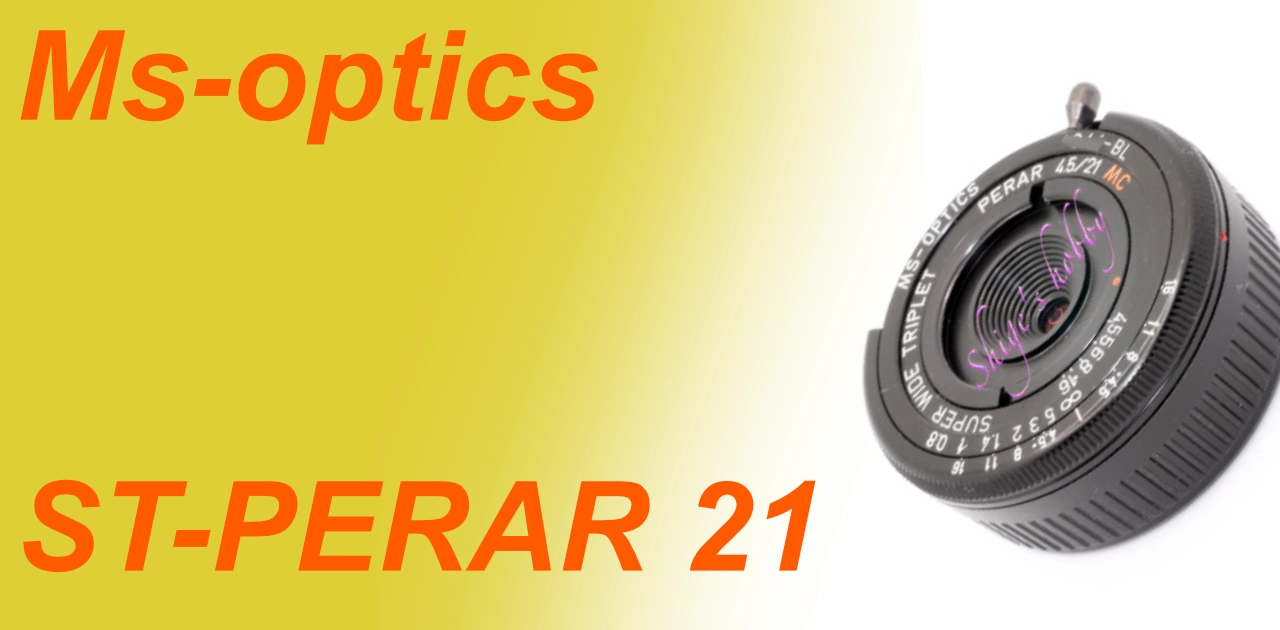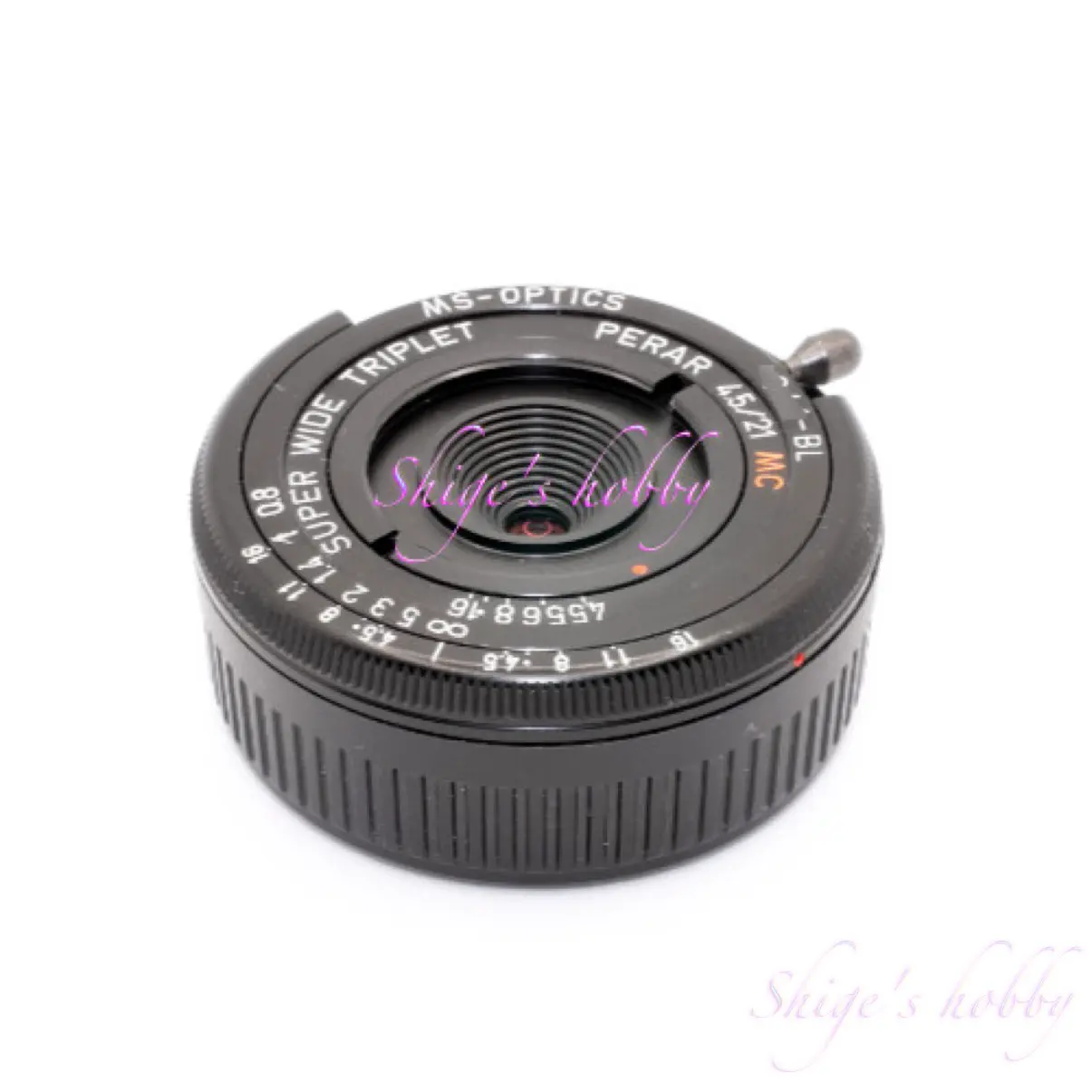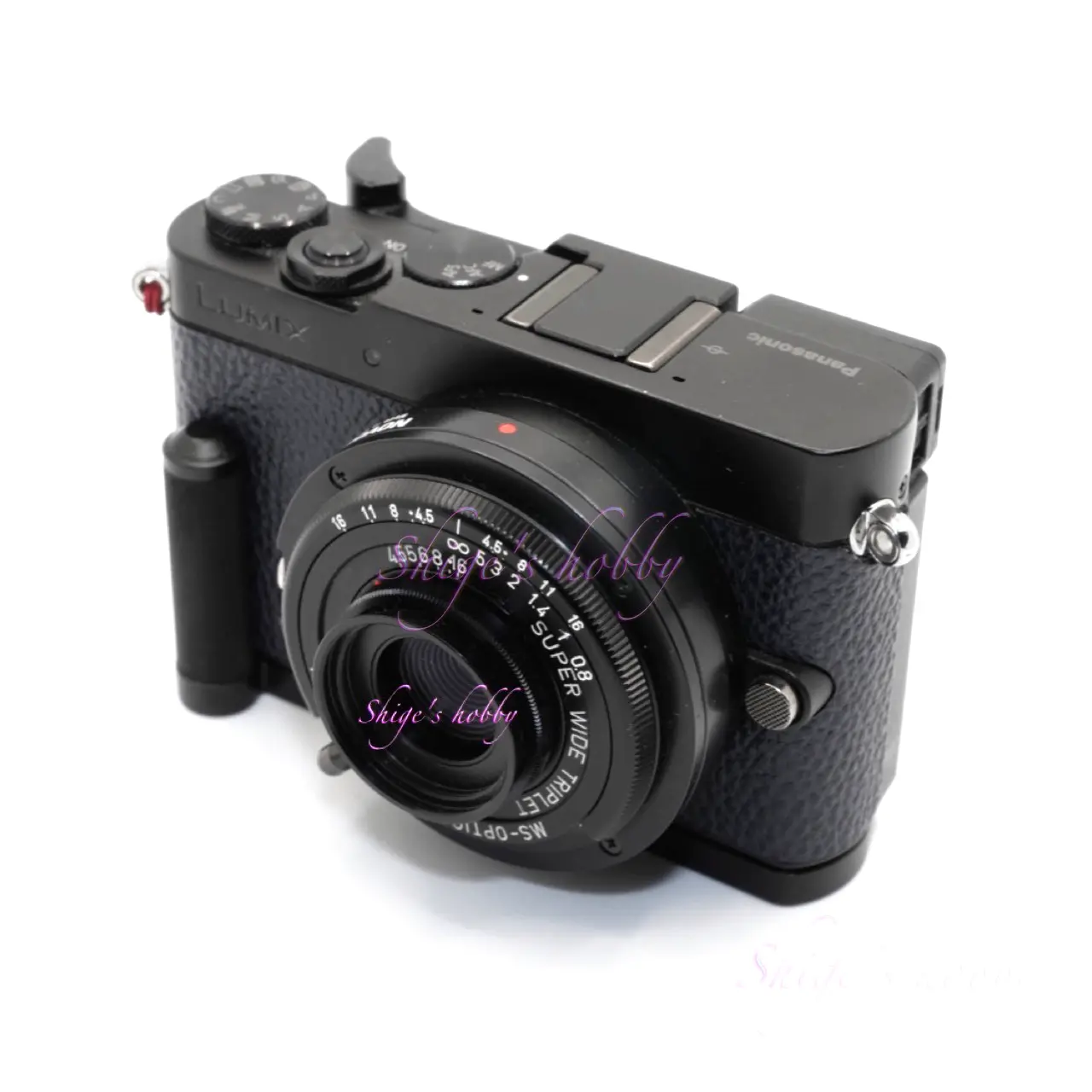Triplet wide angle lens MS-PERAR 21mm

A review and photo examples of using the Ms-optics PERAR 21mm F4.5 with a film camera and a digital camera.
Table of contents
Gallery
- The cameras used to take the sample photos were LEICA M8, LEICA T typ701, HEXAR RF + Rollei B&W 640 (film).
Review


1.Overview
The MS-PERAR 21mm F4.5 is the sixth product released by Ms-optics (Miyazaki Optical) overall, and the fourth in the triplet series, in 2015. As the lens nameplate states SUPER TRIPLE, the lens is a triplet of three elements in three groups, giving it the name PERAR.
The detailed specifications of the lens are listed in the table, but the main specifications are as follows.
- Lens configuration: 3 elements in 3 groups
- Aperture: F4.5~F16
- Aperture blades: 10
- Lens thickness: 5mm
- Minimum shooting distance: 0.5m
- Range of rangefinder coupling for Leica M-type rangefinder cameras: 0.8m
- A 25mm diameter filter is screwed onto the front of the lens
- A dedicated 25mm diameter trumpet-type hood is included
2.Usability
The MS-PERAR 21mm F4.5 is characterized by its clarity with only three elements, and it is surprising that such image quality can be obtained with such a simple lens. You can see this in the depiction of young leaves in the reduced image in the gallery.
Although it is a very compact lens, it is easy to use and the focus can be adjusted smoothly by sliding the focus lever at the bottom of the lens barrel. The aperture is located at the front of the lens barrel, so it can be changed by turning the hood attached there. There are no click stops on the aperture, so the exact aperture value must be confirmed visually.
The rangefinder coupling of a rangefinder camera is limited to 0.8m, but the minimum shooting distance is 0.5m, so you can get closer by estimating it by eye or using an EVF (electronic viewfinder) on a mirrorless camera.
However, because it is a three-element lens, perfect correction is not possible, and image flow due to image plane curvature in the peripheral areas and slight pincushion distortion occur. Also, because the rear end of the lens is close to the sensor surface, older 35mm full-frame sensor cameras like the Leica M typ240 can experience excessive vignetting and a color cast on the edges of the image depending on the angle of the light when shooting a blue sky at full aperture.
One way to avoid these is to use a smaller sensor and cut out the problematic edges.
- An APS-H size sensor is 27mm, substituting for a wide-angle 28mm.
- An APS-C size sensor is 32mm.
- For Micro Four Thirds, it is 42mm.
And since shooting in monochrome alleviates the aforementioned drawbacks, it is also recommended to use it in monochrome.
3.Summary
In conclusion, to sum up the MS-PERAR 21mm F4.5, the lens is 5mm thick, with a barrel as thick as a flat body cap, and the compact lens that characterises the Pella series is a lens that suits small cameras such as the MINOLTA CLE for film cameras, and the SONY α NEX, α5000, α6000 series and LUMIX GM5 for digital cameras.
It is a compact wide-angle lens that is suitable for attaching to a film camera and taking snaps with pan focus at around F8. On film, the drop in the peripheral areas has the effect of highlighting the subject, resulting in a dramatic depiction.
Specification and Study.
The PERAR series of triplet lenses with three elements in three groups released by Ms-Optics consists of four lenses: the MS-PERAR 35mm F3.5, MS-PERAR 28mm F4, and MS-PERAR 24mm F4. The MS-PERAR 21mm F4.5 is the widest-angle lens.
The focal length of 21mm is the main battlefield for wide-angle lenses, and lenses are released by various manufacturers. Lenses in the 21mm / F4.5 class, which is the specification of this lens, include the COLOR SKOPAR 21mm F4P from Voigtlander and the Russar from Russia.
As shown in the comparison table below, of the three lenses, the PERAR 21mm is the most compact lens.
Like the PERAR 21mm, all lenses are likely to exhibit vignetting and color casts in the periphery when used with a 35mm full-frame sensor. Although the lenses are larger, retrofocus lenses are easy to use with digital cameras because they maintain peripheral light and rarely produce a color cast.
| Item | PERAR | COLOR SKOPAR | New Russar+ |
| focal length(mm) | 21 | 21 | 20 |
| Maximum aperture | 4.5 | 4 | 5.6 |
| Minimum aperture | 16 | 22 | 22 |
| Aperture blade | 10 | 10 | 6 |
| Lens configuration | 3 elements in 3 groups | 8 elements in 6 groups | 6 elements in 4 groups |
| Minimum distance(m) | 0.5 ∞ to 0.8m is camera rangefinder-linked | 0.5 ∞ to 0.7m is camera rangefinder-linked | 0.5 |
| Lens length(mm) | 5.2 | 25.4 | 23 |
| Lens max diameter(mm) | 50 | 55 | 55 |
| Filter size | 25 | 39 | 49 |
| Weight(g) | 45 | 136 | 112 |
| Hood | Dedicated trumpet-shaped hood | LH-11 Dedicated cylindrical hood | – |
| Lens mount | M | VM | L39 |
| Release date | 2015 | 2007 | 2014年12月05日 |
| Price | -¥60,000 | -¥55,000 | -¥63,000 |
Reference links
- Description of triplet lenses by Wikipedia
- MS-PERAR 35mm F3.5・Shige’s hobby review
- MS-PERAR 28mm F4・Shige’s hobby review
- MS-PERAR 24mm F4・Shige’s hobby review
- COLOR SKOPAR 21mm F4P・Shige’s hobby review
- LOMO x ZENIT NEW RUSSAR+ 20mm F5.6 ・Shige’s hobby review
Update history
- 2025.7.2
- 2025.3.12
- 2024.03.09:Update article
- 2022.04.26:First draft
Affiliate links
- Some external links are advertisements and clicking them may generate income for the site administrator.

Leave a Reply